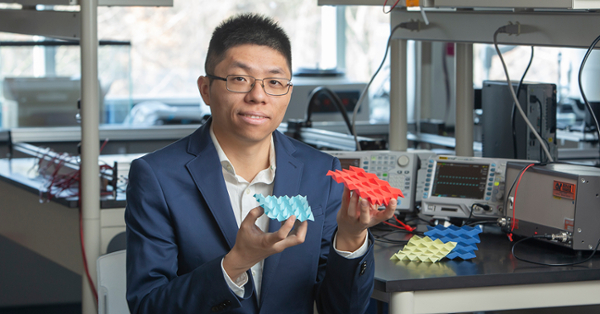Origami could change the shape of acoustics engineering
Origami could change the shape of acoustics engineering

The Japanese paper-folding practice of origami has inspired many engineering applications, from heart stents to solar panels. Rowan researchers in the Department of Mechanical Engineering at the Henry M. Rowan College of Engineering have received a $199,999 grant from the National Science Foundation to use the concepts behind origami to control sound.
Noise reduction panels are used in many objects and scenarios, like cars or airplanes, to minimize tire and engine noise. These materials have a fixed geometry, meaning once they are created and installed, they cannot be altered. Rowan engineers aim to create affordable structures that reduce noise but are flexible because they are folded like origami. With these flexible structures, sound can be directed to different directions. The goal is to manufacture more effective sound-absorbing devices.
“What we are trying to do here is to propose the concept of origami in the design of the structures,” said Dr. Chen Shen, the principal investigator and assistant professor of mechanical engineering. “When we stretch or twist or rotate the structures, the total geometry can be changed so that their interaction with acoustic waves occurs in real time. That way, you can carefully design the structures so you can control the acoustic waves in a reconfigurable manner.”
The thin acoustic sheet will change its shape when external forces, like tension or compression are applied, explained Ph.D. student Chadi Ellouzi.
The researchers will study the acoustics of various scenarios to design origami folds that will best absorb sound in each situation. Shen and his team have developed four origami configurations that can be stretched or twisted based on the acoustics of the environment.
“In the future, we want to expand,” Shen said. “The more functionalities and the more configurations, the better.”
Rowan is among some of the first institutions studying origami structures on acoustic control. Being on the cutting edge of new engineering research is a point of pride for Ellouzi.
“This field of research is going to change our lives within the next 10 years,” Ellouzi said. “The idea of having this thin sheet of reconfigurable origami structure—capable of changing shape without human interference to dampen acoustic waves depending on its surroundings—is very exciting and very practical because it will save a lot of resources and money and will increase the comfort of people through their daily activities in the future.”